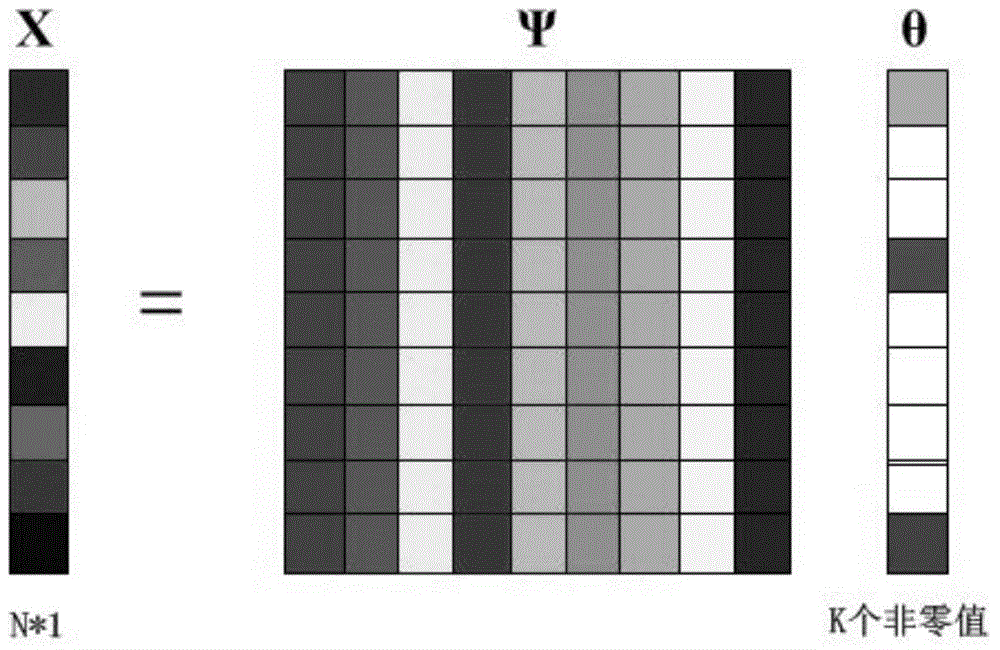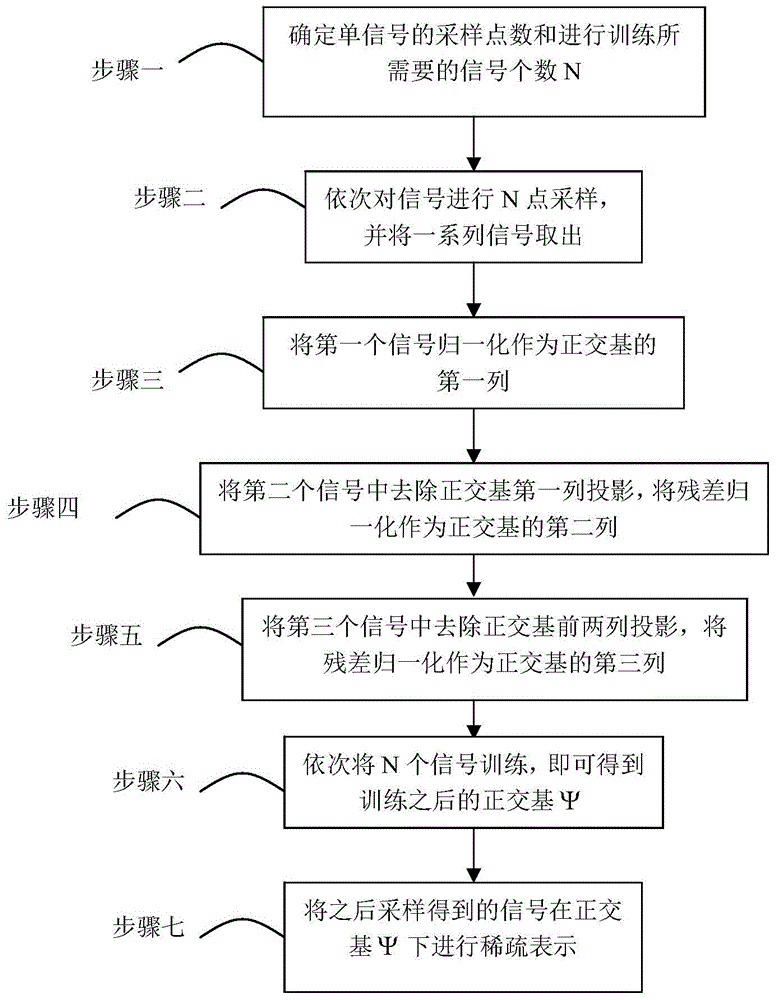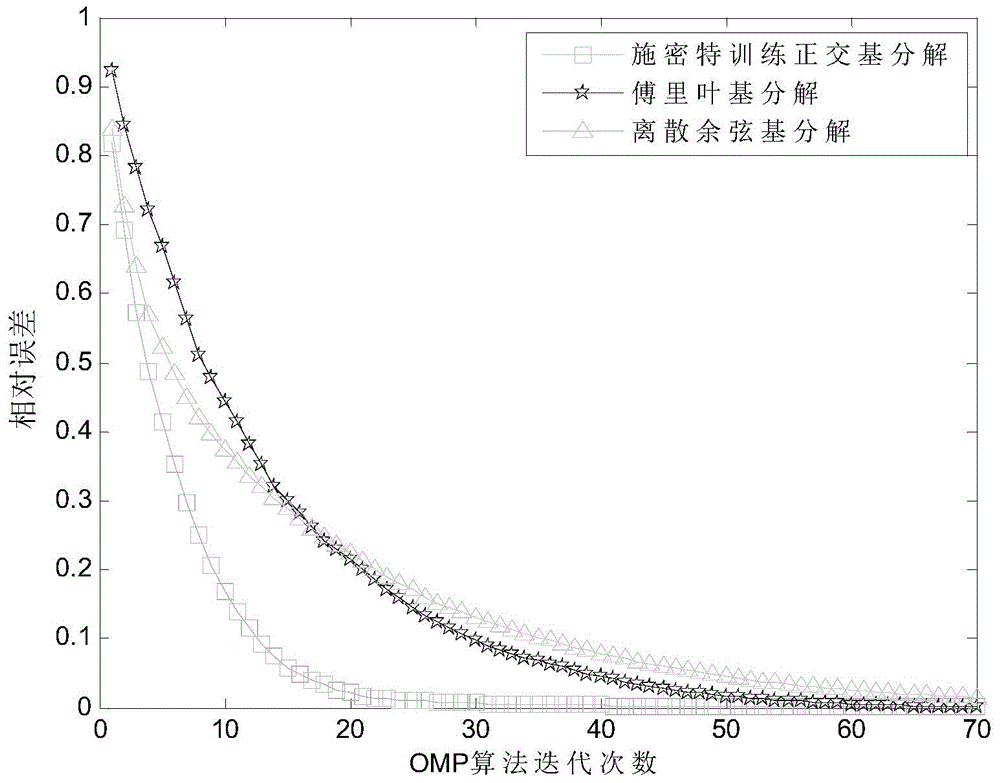Orthogonal basis training method based on Schmidt orthogonalization
A technology of Schmidt orthogonalization and training method, applied in the field of sparse representation, which can solve the problems of poor sparse effect
- Summary
- Abstract
- Description
- Claims
- Application Information
AI Technical Summary
Problems solved by technology
Method used
Image
Examples
specific Embodiment approach 1
[0038] Specific implementation mode one: a kind of orthogonal basis training method based on Schmidt orthogonalization in this implementation mode is realized according to the following steps:
[0039] Step 1. Determine the number of sampling points of a single signal and the number N of signals required for training. The samples are arranged in columns to form a matrix X=[x 1 ,x 2 ,...x n ];
[0040] Step 2. Sampling the signal at N points in turn, and taking out a series of signals, where each signal x i (i=1,2,...N) is an N×1-dimensional vector;
[0041] Step 3, normalize the first signal as the first column of the orthogonal basis;
[0042] Step 4, remove the first column projection of the orthogonal basis from the second signal, and normalize the residual as the second column of the orthogonal basis;
[0043] Step 5, remove the first two columns of the orthogonal basis from the third signal, and normalize the residual as the third column of the orthogonal basis;
[...
specific Embodiment approach 2
[0046] Embodiment 2: This embodiment differs from Embodiment 1 in that: the N signals in step 1 are signals received by the receiving end at equal time intervals.
[0047] Other steps and parameters are the same as those in Embodiment 1.
specific Embodiment approach 3
[0048] Specific implementation mode three: the difference between this implementation mode and specific implementation mode one or two is: the specific process of step three is:
[0049] when the first signal x 1 Upon arrival, the signal is normalized as the first column of the orthogonal basis which is
[0050] Other steps and parameters are the same as those in Embodiment 1 or Embodiment 2.
PUM
 Login to View More
Login to View More Abstract
Description
Claims
Application Information
 Login to View More
Login to View More - R&D
- Intellectual Property
- Life Sciences
- Materials
- Tech Scout
- Unparalleled Data Quality
- Higher Quality Content
- 60% Fewer Hallucinations
Browse by: Latest US Patents, China's latest patents, Technical Efficacy Thesaurus, Application Domain, Technology Topic, Popular Technical Reports.
© 2025 PatSnap. All rights reserved.Legal|Privacy policy|Modern Slavery Act Transparency Statement|Sitemap|About US| Contact US: help@patsnap.com



